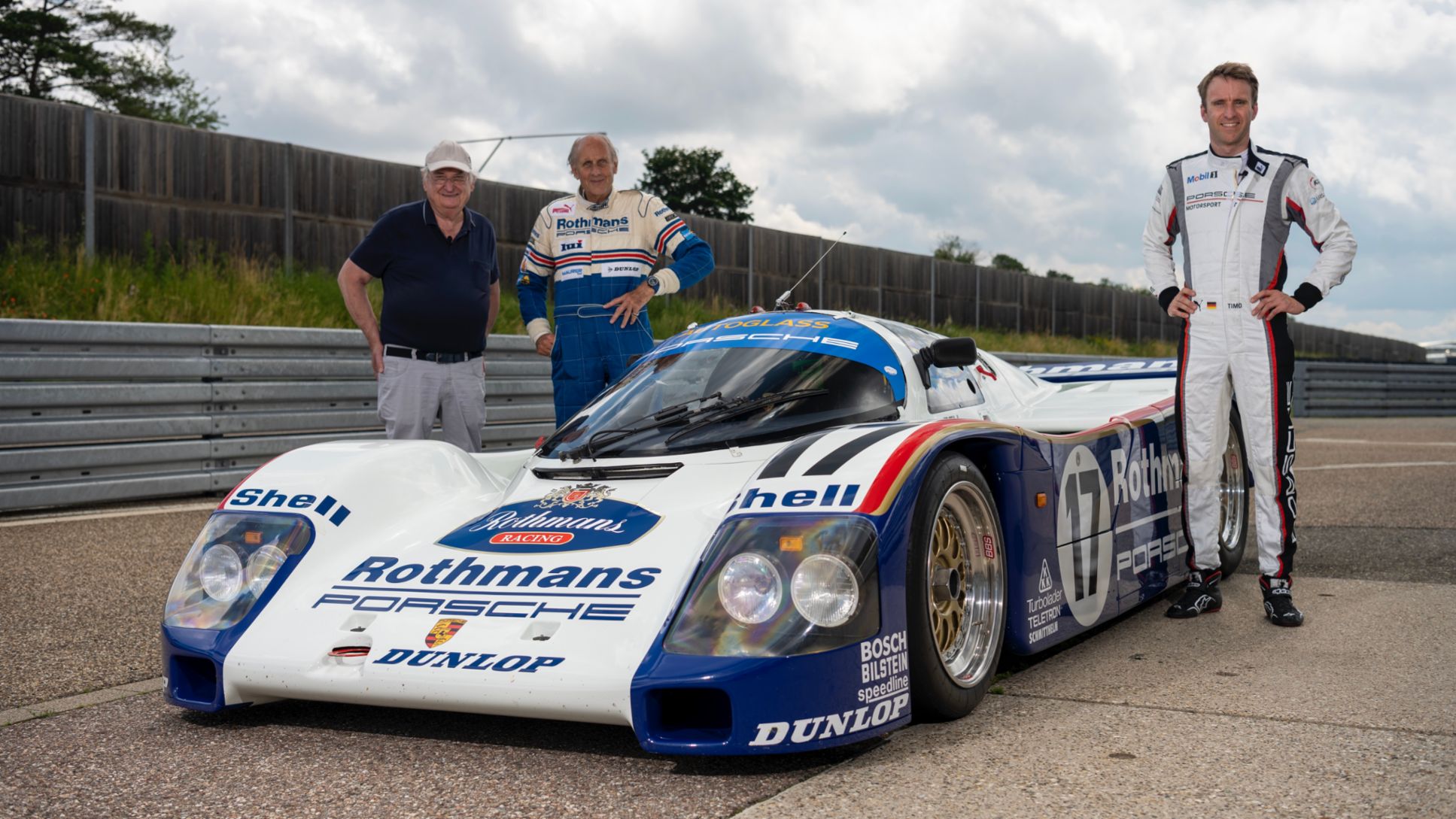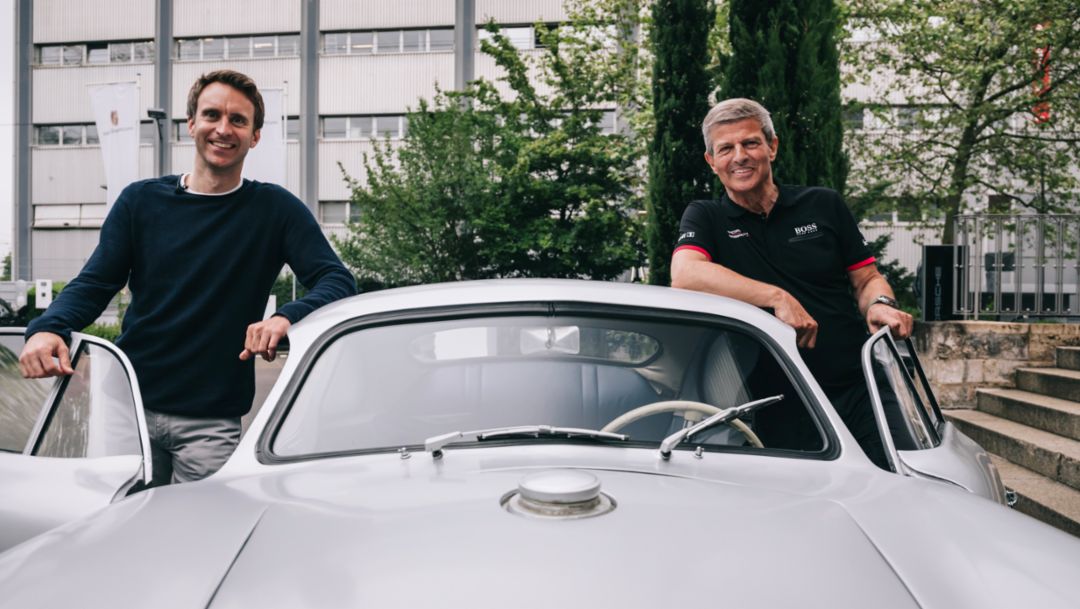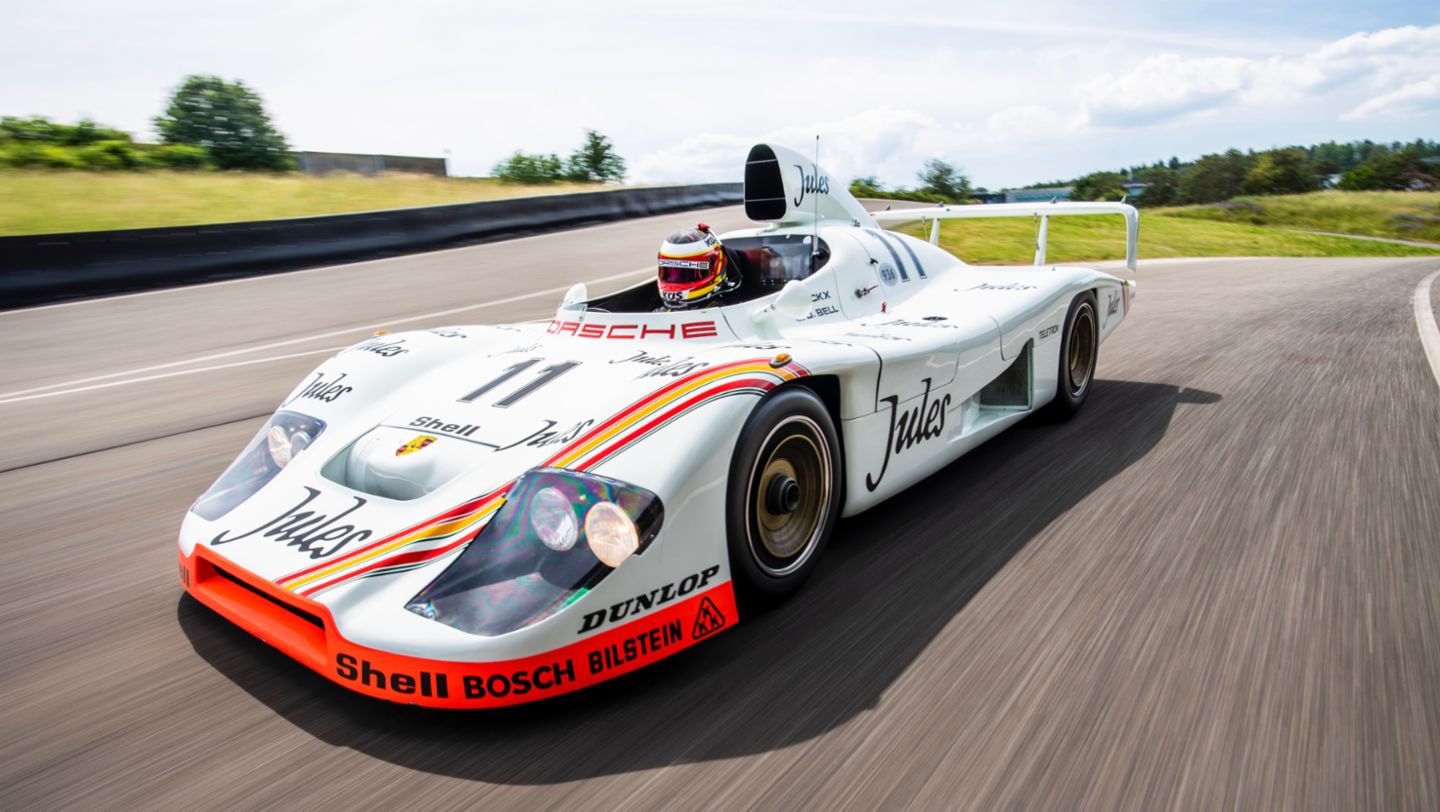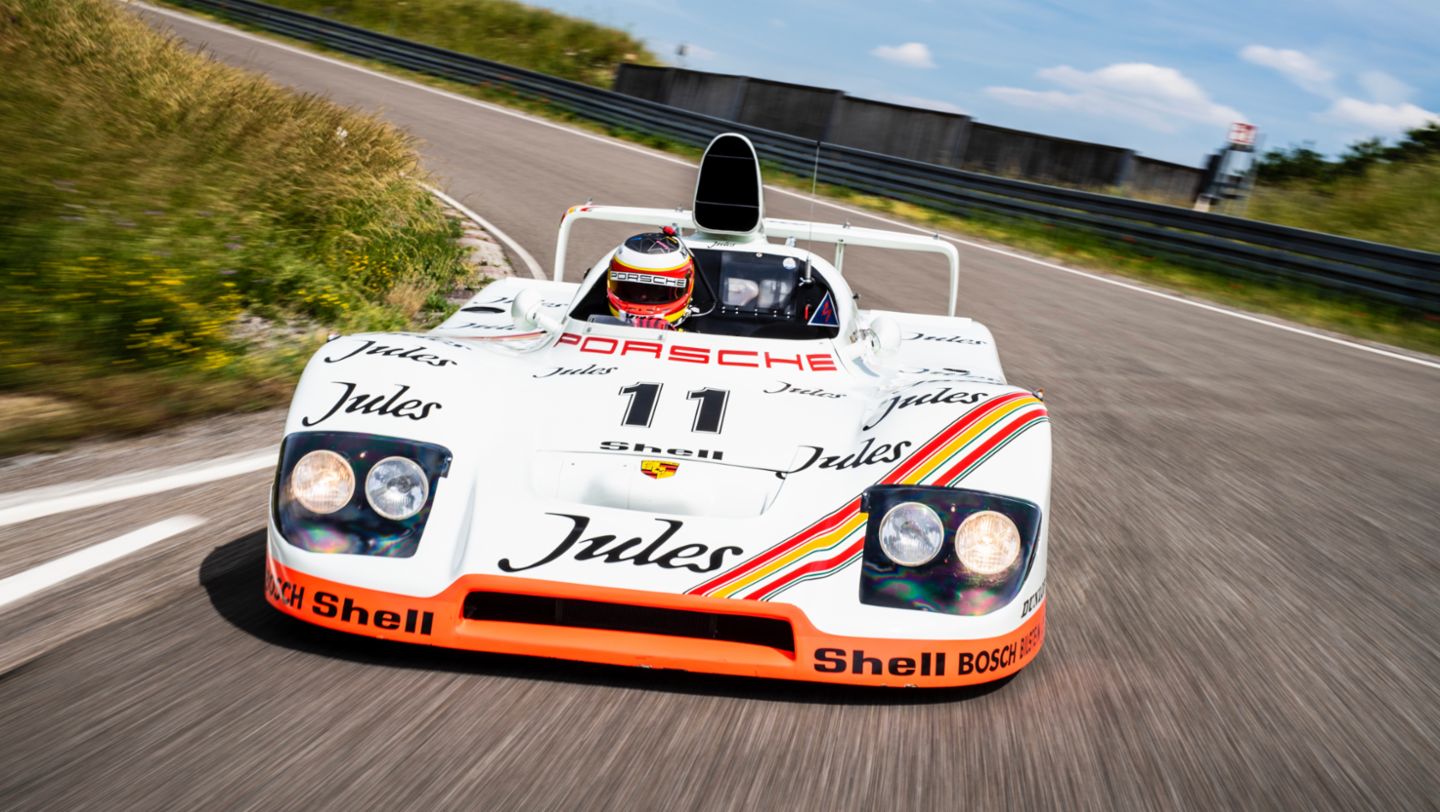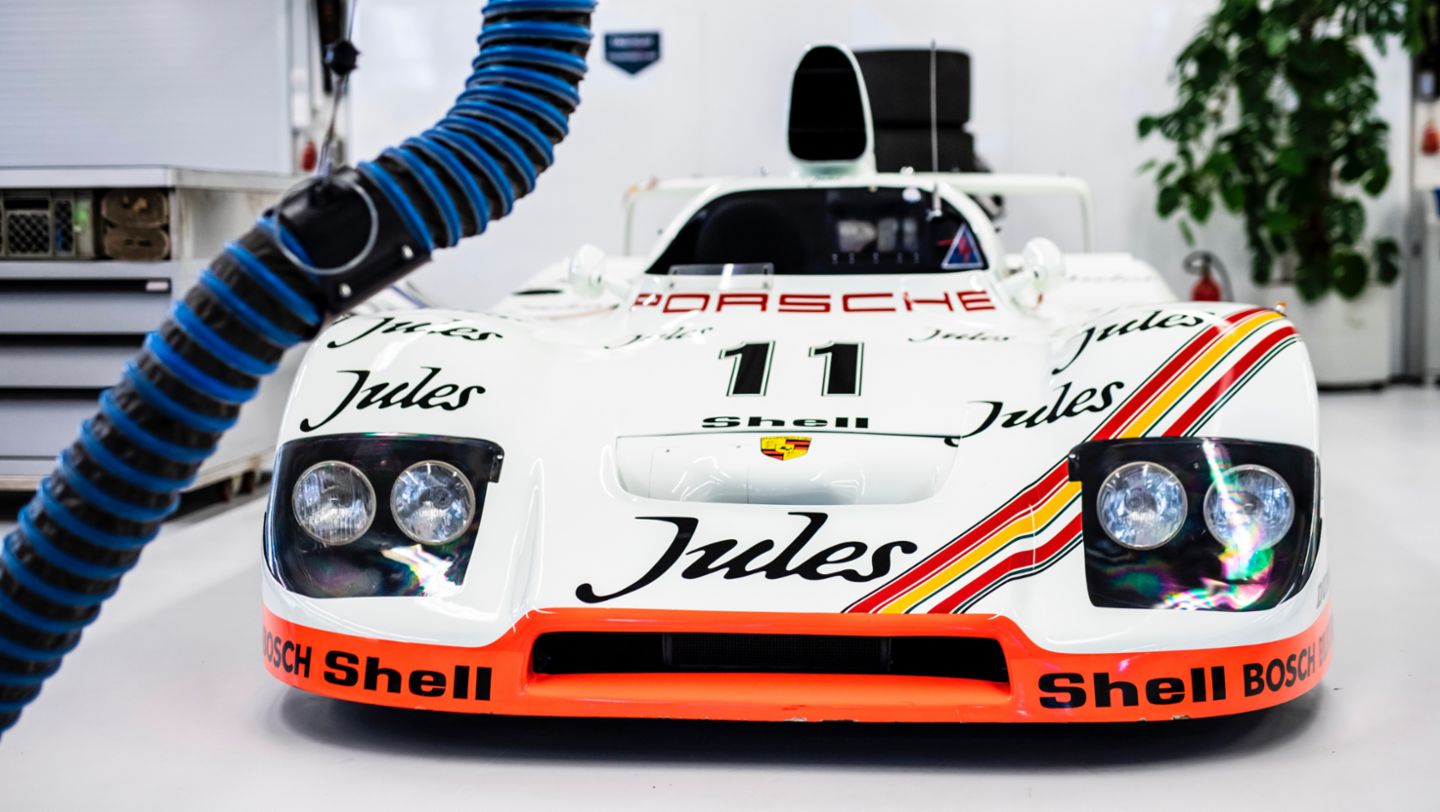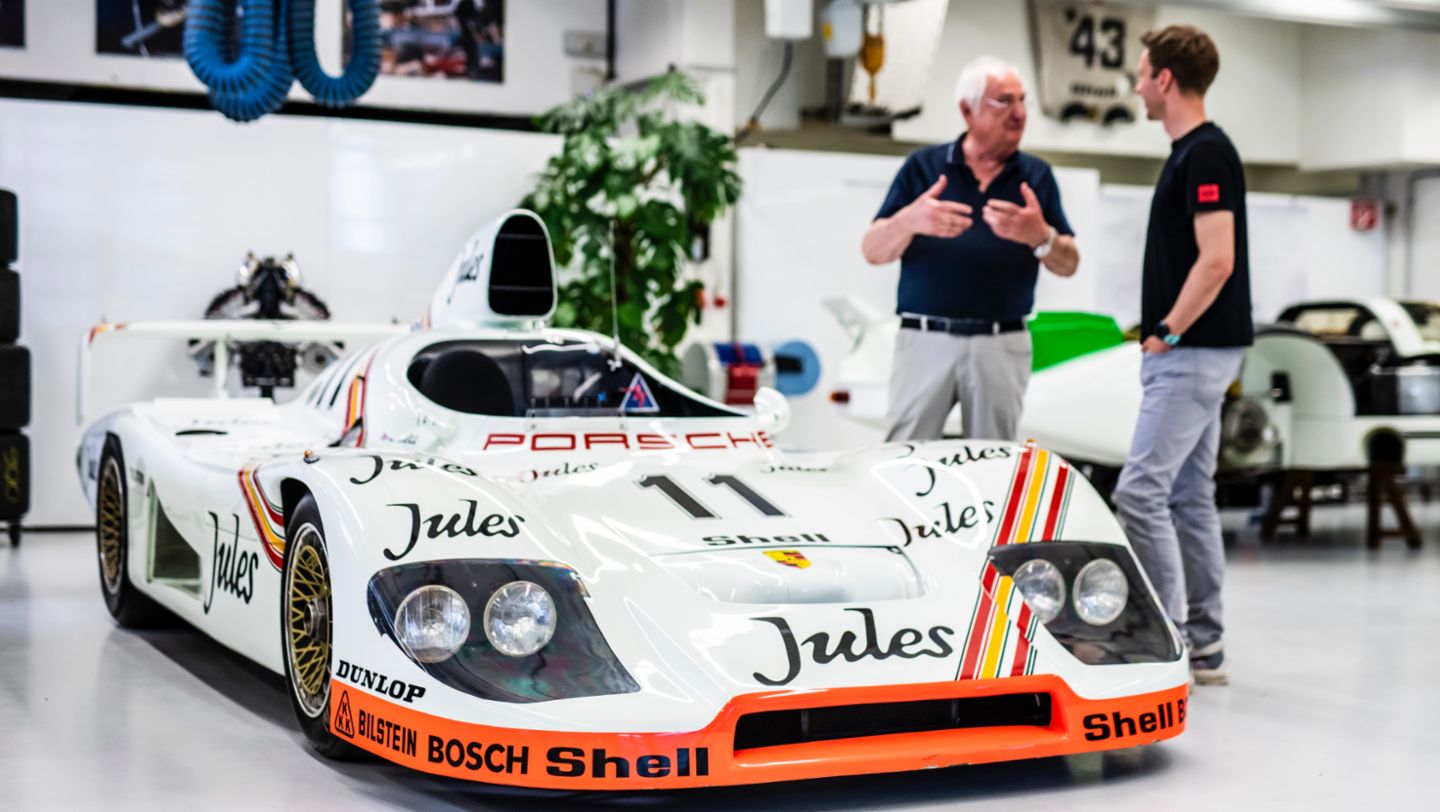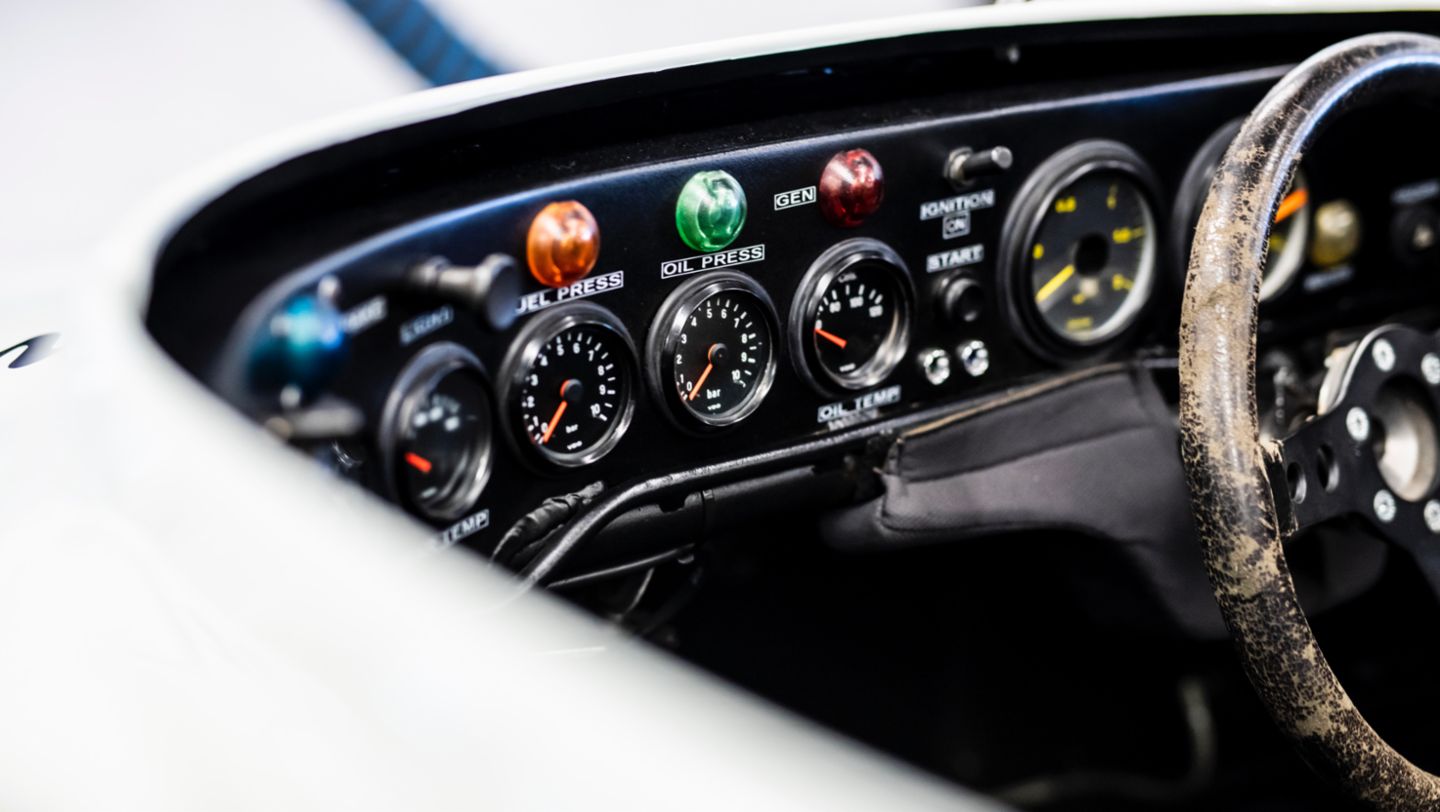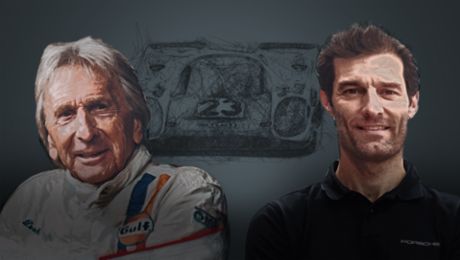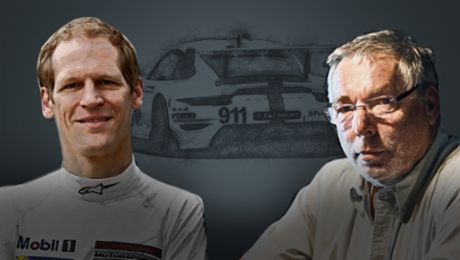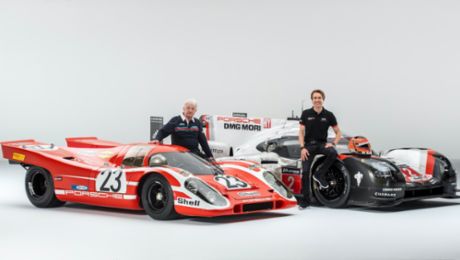Since 1951 at least one Porsche has appeared in the starting line-up for the 24 Hours of Le Mans, every single year. The sports car manufacturer can look back on numerous records and highlights at the race track on the River Sarthe, including 108 class wins and 19 overall victories. This summer, 70 years after its first class victory, Porsche is focusing on a special subject – “The success story of Porsche at Le Mans” – and over the course of six episodes, the new Porsche Moments series takes an in-depth look at the most prestigious endurance race in the world.
In the first episode, host and Le-Mans winner Timo Bernhard talks to Fritz Enzinger, who led the brand to three overall victories at Le Mans as Vice President Motorsport. For episodes two to five, Bernhard is joined by exciting contemporary witnesses on four wheels and two legs: Walter Röhrl, Hans-Joachim Stuck and Norbert Singer. The two racing drivers and the race engineer share their historic highlights from the 24-hour races in north-west France. “It is an honour for us to bring these personalities together with the vehicles that wrote history with them at Le Mans,” says Achim Stejskal, Head of Porsche Heritage and Museum.
In the second episode of Porsche Moments, Timo Bernhard and race engineer Norbert Singer meet up in the historic motorsport workshop at the Weissach Development Centre. Joining them is the 917 KH – the car with which Porsche celebrated its second overall Le Mans victory exactly 50 years ago. “I can still remember well how the car was pushed onto the scales back then and weighed just under 780 kilograms,” says Singer, who was involved in the development of all the Porsche overall winners from 1970 to 1998. The prescribed minimum weight was 800 kg at the time. “The 917 KH was an absolute lightweight due to its tubular space frame made of magnesium. Luckily it had an oil tank with a capacity of 55 litres. So we added 20 litres of oil and weighed it again. This time with success,” reveals Singer.
He talks about the magic of Le Mans back then, and remembers how there were neither pits nor timekeeping: “The vehicles were parked somewhere behind the truck. Those were the days. During the race, we could inform the drivers only by means of boards because there was not yet any radio communication available,” explains the 81-year-old. The outing of the test vehicle with magnesium frame became a race of records: Helmut Marko and Gijs van Lennep drove an overall distance of 5,335 kilometres at an average speed of 222.3 km/h. This distance record would be broken only 39 years later – by a team including Timo Bernhard in an Audi R15.
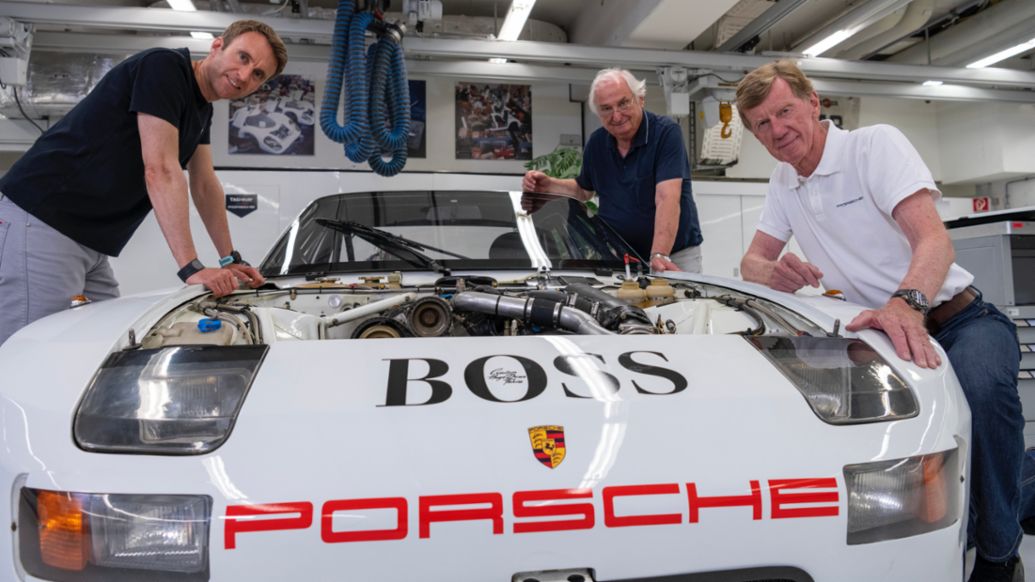
The third Porsche Moments episode focuses on the 936/81 Spyder – the overall winner from 1981 – and the class-winning 924 GTP Le Mans. The then reigning World Rally Champion Walter Röhrl and Le Mans winner Jürgen Barth started out on a secret mission four decades ago. Their Porsche 924 GTP Le Mans was a prototype of the future 944 with a newly developed 2.5-litre engine, which was scheduled to be delivered nine months later. The driver duo finished seventh after 24 hours and won both the GTP class as well as the prize for the shortest overall pit stop time. “When I think back to Le Mans 1981, I immediately feel 40 years younger. The competition overtook me during the day, but at night they only saw my tail lights,” says Röhrl who, as a rally driver, was used to driving at night and keeping a clear view of what was happening in the dark. “At the time, motorsport was the best place to test developments and to gain insights for series production,” adds the Bavarian.
Two 936 cars also competed in the works entry in 1981, and one of these achieved the overall victory. The winning car, which was racing for the first time, was driven by Jacky Ickx and Derek Bell. “Ickx and Bell won with a lead of 14 laps – or to put it another way, they were almost an hour faster than the second-placed car,” explains race engineer Norbert Singer, who played an important part in 16 overall victories achieved by works or Porsche customer teams at Le Mans. “The decision to take part in the 24-hour race in June was taken just a few months before. We had to really hurry up and installed a 2.65-litre biturbo engine in the 936/81 Spyder without further ado. With an output of more than 620 PS, it was one of the most powerful cars in the starting field. A little effort that led to a great success,” says Singer.
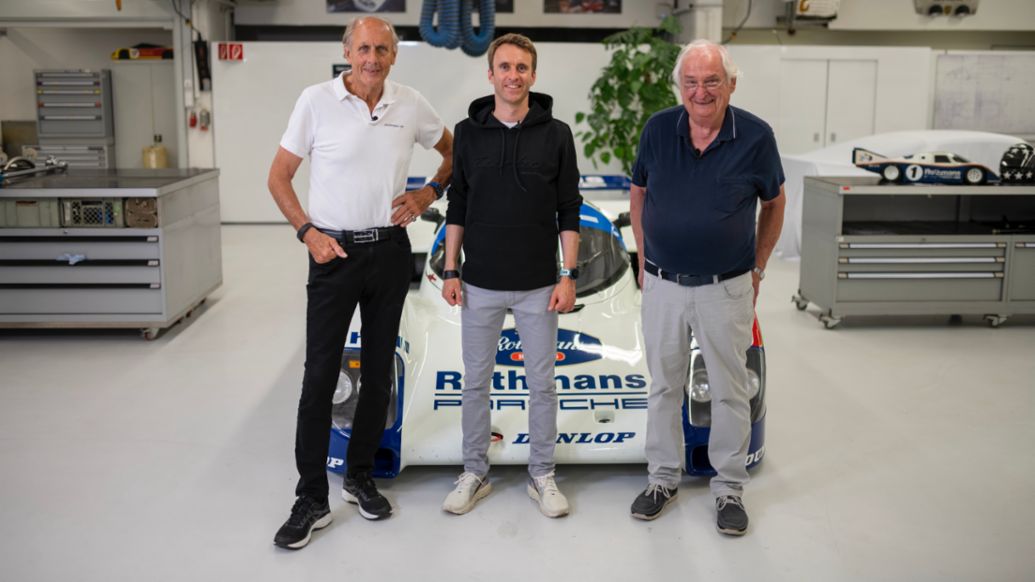
“When you drive at speeds of more than 350 km/h, the white dashes in the middle of the road look like a continuous line,” explains Hans-Joachim Stuck, who can be seen with Norbert Singer in the fourth episode of Porsche Moments. In 1986 and 1987, he was behind the wheel of the Porsche 962 C, the exceptional performance of which was also due to an underbody with ground effect designed by Singer. “Stefan Bellof gave me a tip before my first drive: ‘The faster you move in a car with ground effect, the more grip you have’,” remembers Stuck, who also twice won the Supercup in a 962 C. As in the previous year, Stuck drove Porsche to an overall victory at Le Mans in 1987. Once more, Singer was responsible for the technical success and received well-earned praise for his contribution.
The reunion of the two men is extremely warm and friendly. Stuck is delighted that he is allowed to drive the winning car on the test track in Weissach, while Singer takes a trip down memory lane. “It rained all the time,” he says, “and the quality of the petrol that was provided was not good. It was OK in training, but the fuel for the race was really poor.” Stuck and his team colleagues Derek Bell and Al Holbert won the race with a lead of 20 laps. “Porsche keeps on winning at Le Mans because all those involved work very professionally from preparation right through to the end,” says Stuck.
Historic double victory in the 911 GT1 '98
With the Porsche 911 GT1 ’98, Norbert Singer achieved his 16th and final overall victory as race engineer at Le Mans. In the penultimate episode of Porsche Moments he talks to Timo Bernhard about the historic double victory in 1998. “We won the race because the GT1 ’98 was the most reliable car in the starting line-up,” is how Singer summarises the success of the Porsche with 550 PS. “The car had a carbon-fibre monocoque, and there were also carbon-fibre brake discs in a works racing car for the first time,” he explains. These measures made it possible to reduce the vehicle weight by around 10 per cent compared with the previous year. The high-performance lightweight car didn’t just function as a research laboratory on wheels and a fuel efficiency specialist on the race track at Le Mans, but also drove to a double victory. As coincidence would have it, this was also the brand’s 50th anniversary. “Le Mans is not just any race. It is the most famous endurance race in the world, and enjoys great importance for the Porsche brand,” concludes Bernhard.
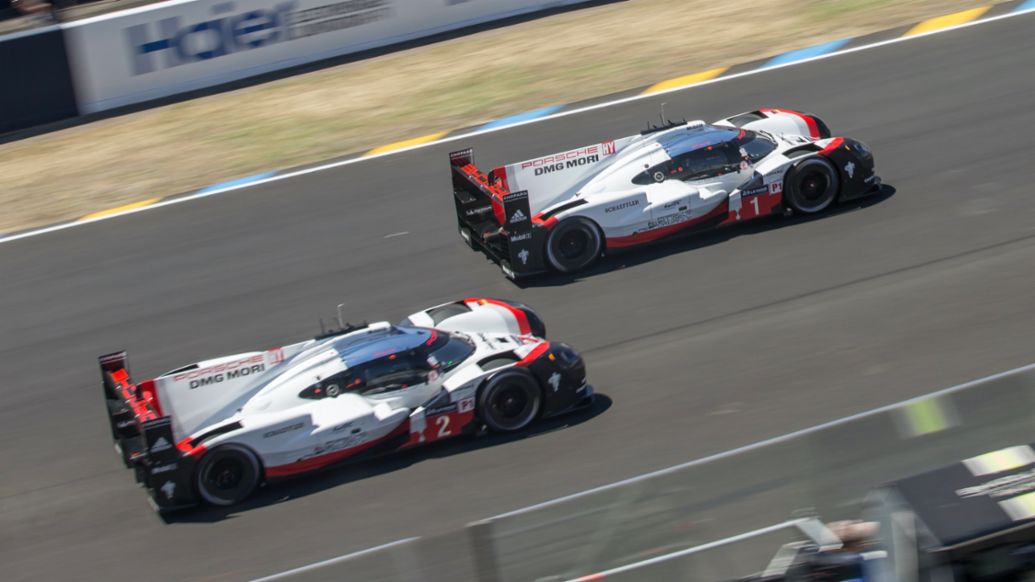
The Porsche Museum will post the Porsche Moments series with Timo Bernhard and Walter Röhrl, Hans-Joachim Stuck and Norbert Singer on its Instagram channel and on Facebook on the following dates: 28 July and 11 August. On 25 August, a final episode will be broadcast from Weissach with the Head of Motorsport Fritz Enzinger, who started the series a few weeks ago. This episode will focus on the 919 Hybrid, which represents the modern legend of Porsche at Le Mans better than any other car. Porsche achieved three overall victories with the hybrid racer in 2015, 2016 and 2017. Host Timo Bernhard will also feature in the episode, sharing insider information and anecdotes.
Worldwide roadshow until spring 2022
In addition to Porsche Moments, an international roadshow will celebrate Porsche’s success at Le Mans, taking in ten countries by spring 2022. Fourteen stops are scheduled in locations including France, the UK, the US, China, the United Arab Emirates and Germany. Porsche enthusiasts can look forward to static and dynamic appearances by more than 20 original cars from the historic collection that achieved either class or overall victories.
In various Porsche Experience Centres worldwide, Heritage Corners will reflect the theme of the roadshow and will explore the success story in greater depth. Appearances at classic car events are also planned, such as at the Monterey Car Week in California. Depending on the pandemic, drivers will either take part in person or virtually, giving Porsche and motorsport fans an insight into their Le Mans experiences.
The Porsche Museum’s social media channels will also provide plenty of information about the roadshow while in Zuffenhausen, interested fans can find out more along the glass partition that provides a view of the workshop in the museum. A selection of Le Mans racers will be on display there during the roadshow.
